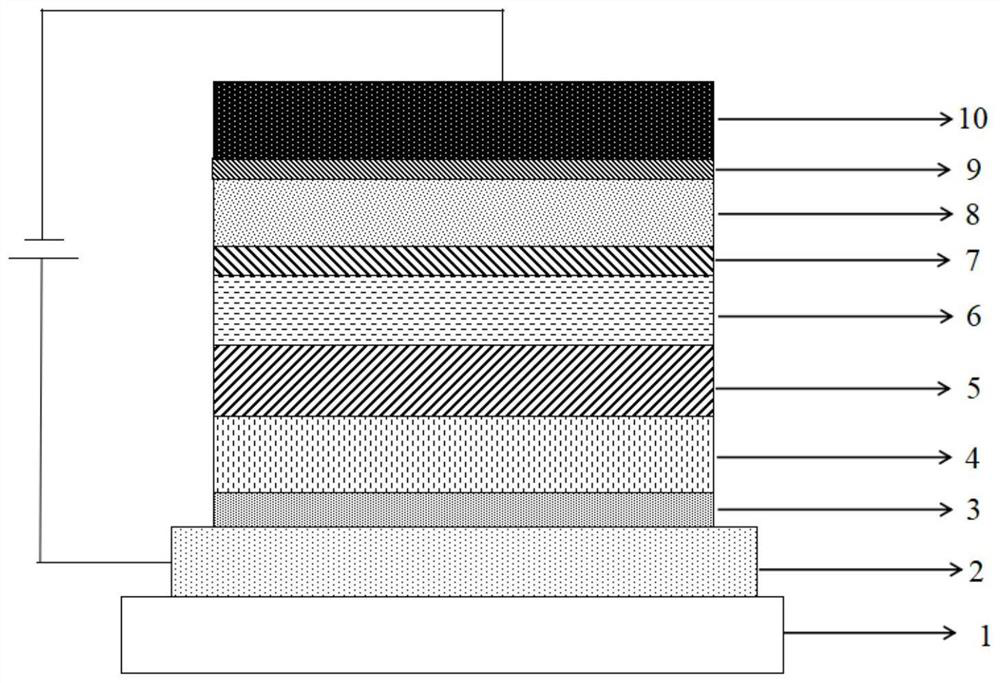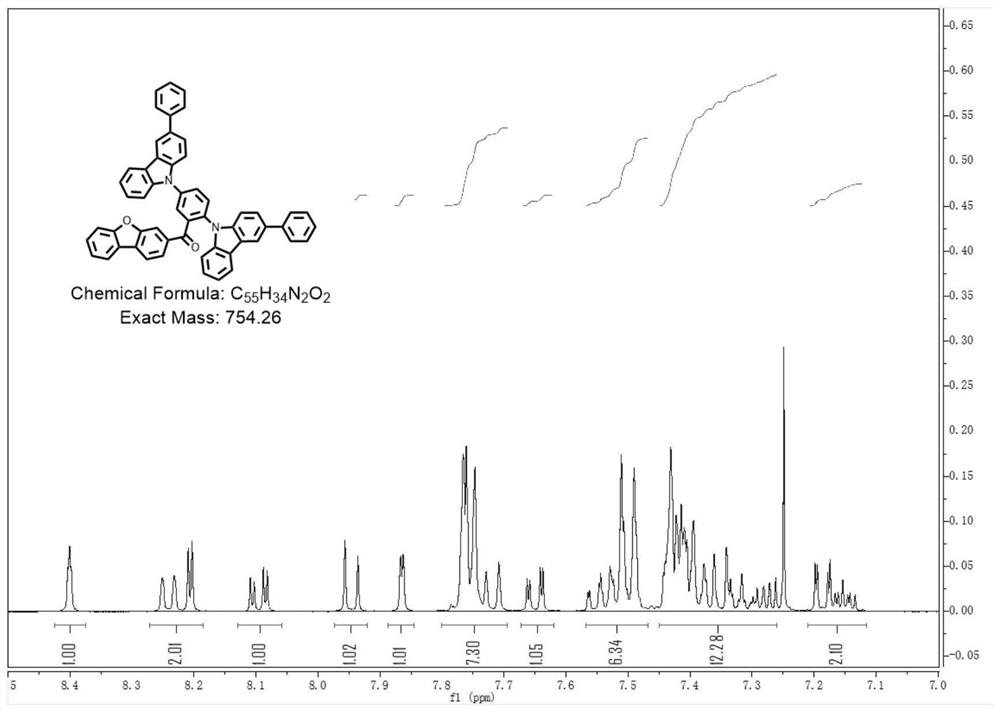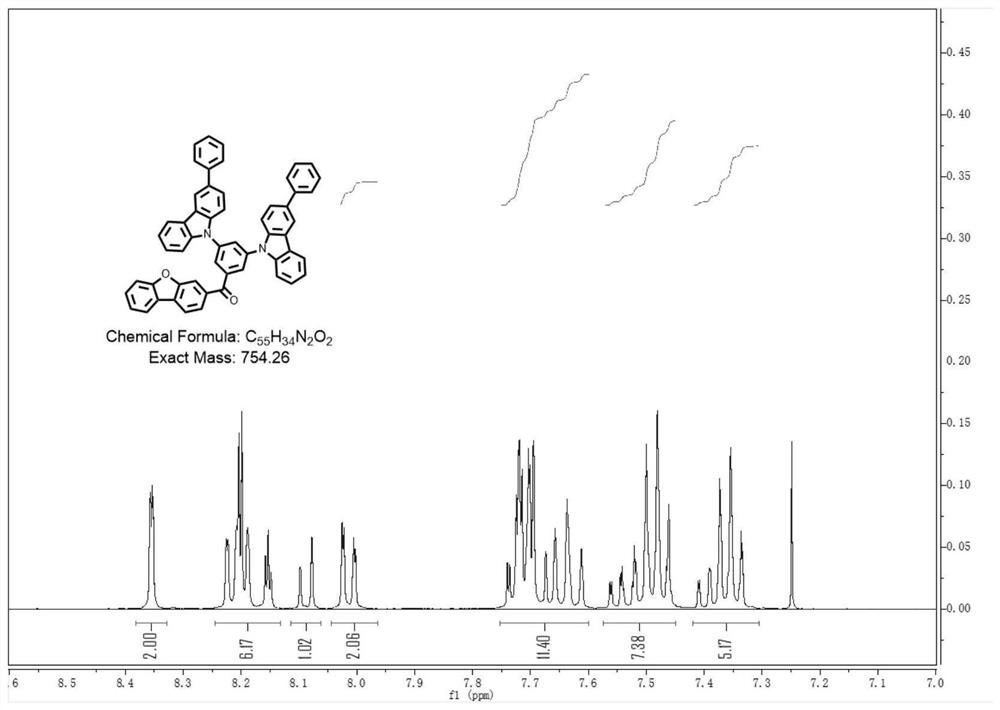Ketone-containing organic compound and application thereof
An organic compound and organic technology, applied in the field of organic electroluminescence devices, can solve the problems of high fluorescence quantum yield, short delayed luminescence life, poor device effect, etc., and achieve good spectral stability, improved life, The effect of improving efficiency
- Summary
- Abstract
- Description
- Claims
- Application Information
AI Technical Summary
Problems solved by technology
Method used
Image
Examples
preparation example Construction
[0054] Preparation of raw material C
[0055] The preparation process of raw material C1:
[0056]
[0057] Under a nitrogen atmosphere, add 0.05mol of raw material M1 and 0.06mol of Mg powder into the three-necked flask, then add 60ml of dry tetrahydrofuran to dissolve them, and then add 0.0004mol of elemental I 2 . The reaction mixture was heated to 40 °C and stirred until the solution changed from yellow to colorless. Then the mixed solution was heated to 80° C., stirred and reacted for 4 hours, no magnesium powder was left, and the reaction was complete to obtain the raw material C1.
[0058]The preparation method of other raw material C is similar to the preparation method of raw material C1, only the raw material M1 is changed.
[0059] Preparation of Intermediate B
[0060] The preparation process of intermediate B1:
[0061]
[0062] In a three-neck flask, dissolve 8 mmol of raw material D1 in 50 ml of anhydrous tetrahydrofuran, cool in an ice bath and stir ...
Embodiment 1
[0069] The synthesis of embodiment 1 compound 6
[0070]
[0071] 4.4 mmol of intermediate B1 and 4.4 mmol of starting material E1 were added to 50 ml of toluene solution, degassed for 10 min, and then 0.1 mmol of Pd(AcO) was added 2 , 0.3mmol 1,1'-bis(diphenylphosphino)ferrocene (dppf) and 6mmol tBuONa, under the protection of nitrogen, the mixture was stirred and heated at reflux for 24 hours, then the reaction solution was poured into water, and firstly washed with dichloromethane Extraction, organic compounds were dried with magnesium sulfate, and then dichloromethane / petroleum ether (v / v=2:3) was used as eluent for silica gel column chromatography separation, rotary evaporation and drying, and the final product was re-treated at 280 °C and 4 ×10 -4 Further sublimation at Pa afforded compound 6.
[0072] The preparation methods of Example 2-Example 18 are similar to Example 1, except that the raw materials and intermediates used are different. The following table list...
Embodiment 19
[0078] Embodiment 19: the synthesis of compound 27
[0079]
[0080] (1) Add 4.4mmol of intermediate B16 and 4.4mmol of raw material E2 to 50ml of toluene solution, degas for 10 minutes, and then add 0.1mmol of Pd(AcO) 2 , 0.3mmol 1,1'-bis(diphenylphosphino)ferrocene (dppf) and 6mmol tBuONa, under the protection of nitrogen, the mixture was stirred and heated at reflux for 24 hours, then the reaction solution was poured into water, and firstly washed with dichloromethane Extraction, organic compounds were dried with magnesium sulfate, and then dichloromethane / petroleum ether (v / v=2:3) was used as eluent for silica gel column chromatography separation, rotary evaporation and drying, and the final product was re-treated at 280 °C and 4 ×10 -4 Further sublimation under Pa affords intermediate Ⅰ-1.
[0081] (2) Add 4.4mmol of intermediate I-1 and 4.4mmol of raw material E6 to 50ml of toluene solution, degas for 10 minutes, and then add 0.1mmol of Pd(AcO) 2 , 0.3mmol 1,1'-bis...
PUM
| Property | Measurement | Unit |
|---|---|---|
| thickness | aaaaa | aaaaa |
Abstract
Description
Claims
Application Information
 Login to View More
Login to View More - R&D
- Intellectual Property
- Life Sciences
- Materials
- Tech Scout
- Unparalleled Data Quality
- Higher Quality Content
- 60% Fewer Hallucinations
Browse by: Latest US Patents, China's latest patents, Technical Efficacy Thesaurus, Application Domain, Technology Topic, Popular Technical Reports.
© 2025 PatSnap. All rights reserved.Legal|Privacy policy|Modern Slavery Act Transparency Statement|Sitemap|About US| Contact US: help@patsnap.com



